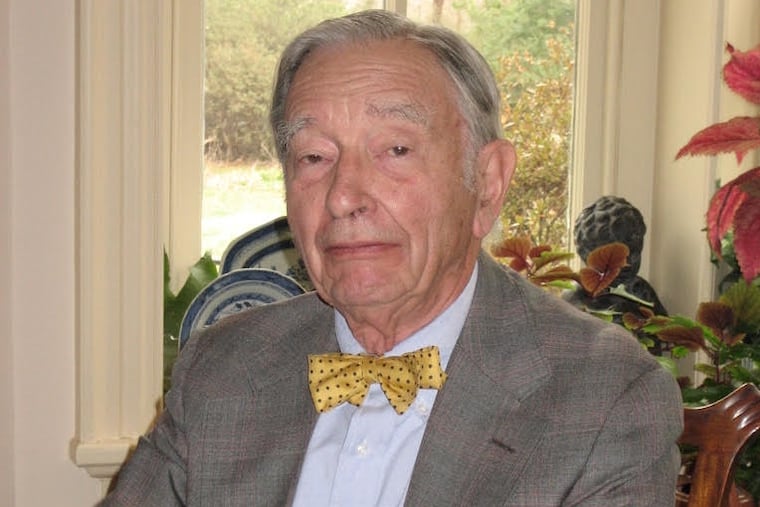Robert E. Forster II, medical researcher and former chairman of physiology at Penn, dies at 101
Among his many achievements was important research at Penn and elsewhere on blood flow, gas exchange, and other processes of body functions.

Robert E. Forster II, 101, a prolific medical researcher, pulmonary physiologist, and former chairman of the department of physiology at the University of Pennsylvania, died Sunday, Sept. 19, of a stroke at his home at the Quadrangle retirement community in Haverford.
Studious, humorous, and passionate about his work, Dr. Forster worked tirelessly at Penn until he retired in 1990 at 71. At 85, he still had an office at the university, and an active research grant from the National Institutes of Health. At 100, he was a popular figure at the Quadrangle, and lived as far away from the dining hall as possible so he could squeeze in some exercise going to and from his meals.
Dr. Forster joined the staff at Penn in 1951, became chair of the physiology department’s graduate school in 1959, and chair of the entire department in 1970. He authored many papers, lectured about his research, and, with others, first published The Lung: Clinical Physiology and Pulmonary Function Tests, in 1957.
He was on an advisory committee to NASA in the 1960s, elected to the National Academy of Sciences in 1973, and spent a year working in Hanover, Germany, after winning a prestigious Humboldt Research Fellowship in 1993.
Dr. Forster was president of the American Physiological Society in 1966-67, and said in a 2014 interview for the society’s living history series that while researchers may be forgotten, their important discoveries live on.
“Your teachers are your foundation,” he said. “You only add a little to what they taught you. Luck is most important. If you look back over my career, I’ve had extraordinary good fortune, and a great many people helped me. But you have to recognize it when it comes. Keep your eye open for something new.”
In a short autobiography on the National Academy of Sciences website, Dr. Forster wrote that some of his most intriguing research addressed “the uptake and delivery of oxygen to cells … problems of humans in space … and the mechanism of removal of protons from skeletal muscle.”
Born Dec. 23, 1919, in St. Davids, Dr. Forster liked to see how things worked as a child, and discovered an affinity for amateur radio, science fiction, and physics. He graduated from Radnor High School, made it through the Sheffield Scientific School at Yale University in just three years, and received his medical degree from Penn in 1943.
He did an internship at the Brigham and Women’s Hospital in Boston, spent time in the Army during World War II researching temperature regulation at the Climatic Research Laboratory in Lawrence, Mass., and afterward earned a fellowship in the department of physiology at Harvard University before joining Penn.
Dr. Forster was a member of the Society of General Physiologists, the Biophysical Society, and the American Society for Clinical Investigation.
He liked to play tennis at the Merion Cricket Club, sail Duxbury Bay in Massachusetts, adopt dogs, and send anonymous valentines to his daughter. He wore bow ties whenever he could, and often drove from his home in Haverford to Penn down Lancaster Avenue in his convertible car and wearing his favorite fedora.
He met Elizabeth Day on a blind date — she said he looked like Gregory Peck — and they married in 1947. They lived in Haverford, and had daughters Julia and Babs, and sons Jameson and John.
“He was so well-read,” said his daughter Babs. “We’d all sit together at dinner, and then he’d go study. He truly loved what he did.”
In addition to his children, Dr. Forster is survived by nine grandchildren, three great-grandchildren, and other relatives. His wife and two brothers died earlier.
A service is to be held and livestreamed at www.theredeemer.org at 11 a.m., Saturday, Nov. 13, at the Church of the Redeemer, 230 Pennswood Rd., Bryn Mawr, Pa., 19010. Interment is to be in Duxbury, Mass.
Donations in his name may be made to Penn’s Department of Physiology, c/o Andrew Bellet, 3535 Market St., Suite 750, Philadelphia, Pa. 19104, or call 215-573-0548.